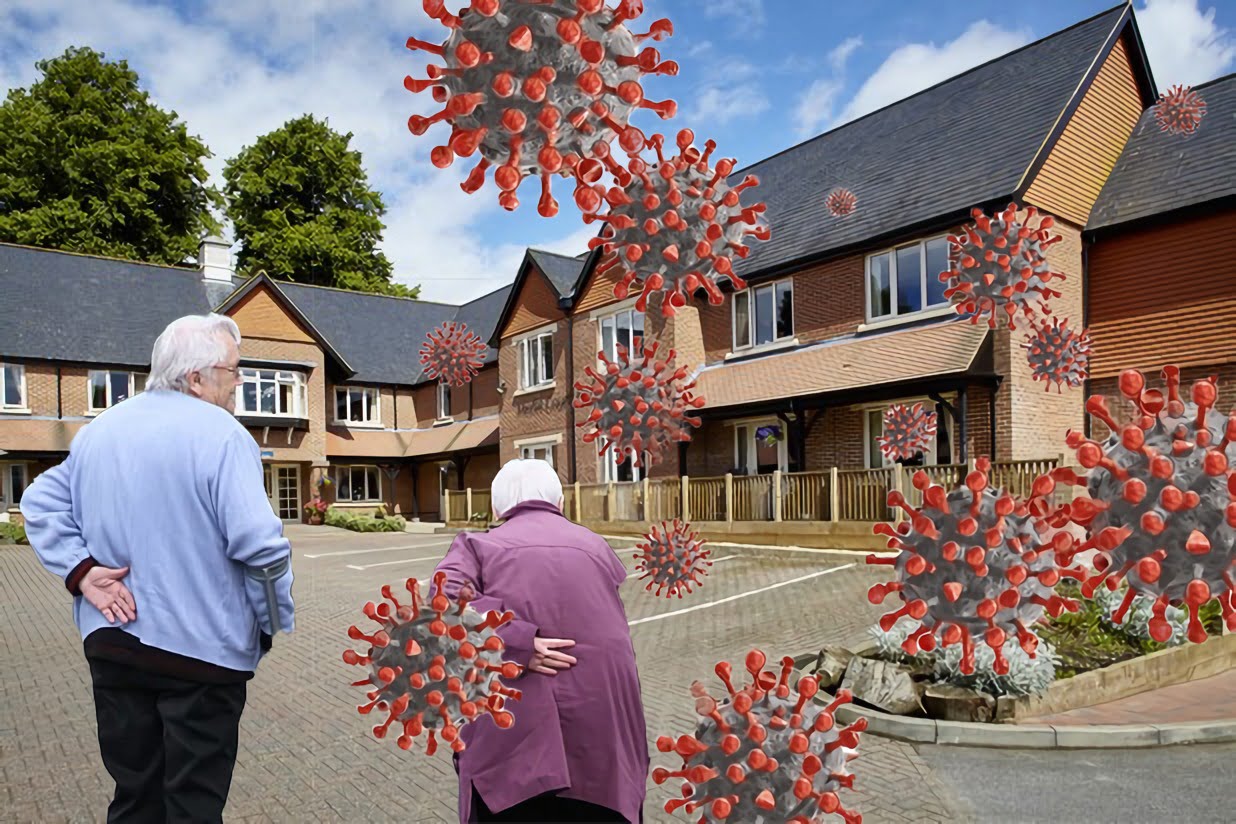Thousands are silently dying in UK care homes, ignored by this callous Tory government. And care workers are being put in the firing line, provided with no PPE. We need a social care system that is fully funded and publicly owned.
Official statistics for coronavirus deaths in UK care homes recently passed 1,000. But care home managers have warned that the real toll may be far higher. Care England and the National Care Forum, which represent home operators, have respectively estimated that 7,500 and 4,000 residents may have already died from covid-19.
These unaccounted for deaths – along with those who have died in their own homes – have contributed to estimates that the real number of coronavirus-related deaths is more than double the official figure, which only includes those who have passed away in hospital.
Warnings ignored
Social security nets have been chipped away at for a decade-or-more. The covid-19 crisis has exposed this for all to see. To many, it had been obvious for years.
Austerity has been the political hallmark of the last ten years. Cuts were being made all over the country, in every avenue possible.
Now, with coronavirus, the internet is awash with images of doctors using plastic bags instead of proper PPE; of overworked nurses with bruised faces from long shifts in masks. These come as a shock to many, as do the silent deaths of healthcare workers on the frontline. But these horrors could clearly have been avoided.
My brother (@MrVikVeer1) is part of the NHS in London… they’ve been forced to use DIY goggles and basic materials to try and protect themselves against #COVIDー19. Shame on you Tories for making this their reality ? #ProtectTheNHS pic.twitter.com/7biN4R6rZm
— Couch Nish (@CouchNish) April 2, 2020
Back in October 2016, a study named Exercise Cygnus looked at the impact of a severe flu-like outbreak on Britain’s healthcare system. Tory ministers were informed that the NHS and overall healthcare sector would be quickly overwhelmed, with a shortage of critical care beds, insufficient morgue capacity, and insufficient resources such as PPE.
This advice was deemed by Whitehall officials to be too sensitive to be made public at the time, and the warning was totally ignored by the government. Instead, they continued with business as usual: cuts, cuts, and more cuts.
The great British sell off
For decades, the British state has been selling off public assets to their cronies in business. In the process, the care sector – now more under the spotlight than ever before – has been gradually handed to profiteering private companies.
Before 1979, over 60% of residential and nursing home spaces in the UK were still provided by local authorities or the NHS. By 2012 it was just 6%. Some areas of the country have no local authority-run adult residential social care at all.
This has had a profound impact on the quality of care provided. Care homes run for profit aim to cut costs at every opportunity. Compared to those in local authority run homes, for example, the average wage of residential care workers in privately-run homes is around £2 an hour lower – usually at legal minimum wage levels.
The number of staff on shift is frequently at the bare minimum required by law. The CQC (Care Quality Commission) who regulate care homes in the UK have said that inadequate staffing levels are the main cause of instances of residents receiving poor-quality care.
Public money siphoned for profits
The transfer of public assets to private hands has also cost the taxpayer millions more than if these facilities had been provided in house, by the local authority themselves.
Many of these privately-run care homes are smaller businesses. Just over 40% of care home operators have three or fewer homes. But this percentage has been steadily decreasing over time. There is a trend, in turn, for small local operators to be replaced by large chain providers – many with more than 50 care homes each.
The ten largest providers account for about 20% of the UK care home market. These large companies turn massive profits of millions of pounds every year.
But the majority of that money comes from the public purse in the first place. Most care home residents in the UK receive some or all of their funding for their placement through some kind of state allowance. This may be funding secured by the private care home from the local authority, or via the service-user in the form of a PIP payment, a pension, or some other state benefit.
So, in effect, instead of using taxpayers’ money to run a service on the basis of need, it is used to make profits for the private care home bosses – all at the expense of workers’ wages and residents’ quality of care.
Social care in wales is privatised, yet 80% of it is paid for by the state anyway. The private homes just suck out profit and shit all over the staff
— Desolation Radio (@desolationwales) April 24, 2020
Workers in the firing line
 Now, as the pandemic sweeps the globe, thousands of residents in Britain’s care homes are dying; and this tragic loss of life is not being accounted for.
Now, as the pandemic sweeps the globe, thousands of residents in Britain’s care homes are dying; and this tragic loss of life is not being accounted for.
As space in hospitals fills up, confirmed coronavirus patients are being cared for in residential homes for as long as possible. Some 430,000 vulnerable people live in care homes in the UK. And in homes with as many as 60 residents, the virus will spread fast.
Staff working in private care homes are risking their lives too – all for measly wages – in an uncharted swamp of private companies, each with their own contracts, suppliers, and guidelines.
Testing for care workers has also been significantly substandard. The anonymous head of one British care home group told Financial Times journalists that authorities had ignored his pleas for testing kits until a sixth resident had died in the space of four days in one of his homes. Even then, the home was only sent four tests for its dozens of residents, and none for the staff.
The lack of clarity from the government has confused the situation even further. Carers – usually paid by the hour, and with only statutory sick pay to fall back on – are unsure about whether to go to work with a cough or not.
Many employers are telling them to come to work ‘so long as you don’t have the fever’. Arbitrary guidelines and rules put in place by individual companies have care workers understandably anxious.
Some of these care homes were close to breaking point before this, with conditions so bad they couldn’t retain staff. Agency staff are required to cover shifts. But this means workers going from care home to care home, shift after shift. As each business scrambles to buy a diminishing stock of PPE from private suppliers, staff make do with one paper mask per twelve-hour shift.
Bold demands
Under Corbyn’s leadership, the Labour Party put forward a commitment to establish a National Care Service. Now, in the context of coronavirus, such a demand has never been more relevant. And yet Sir Keir Starmer – eager to steer the Labour Party to the right – has made no mention of it yet.
The call for a National Care Service, working in tandem with a fully funded NHS, must be a top priority. The complete lack of ability to coordinate a national response to the crisis is compounded by the fragile spider web of private business interests that currently make up this essential social service.
The pandemic is making people reevaluate who the real value-creators in our society are. While the investment bankers and marketing executives of the world twiddle their thumbs, minimum-wage workers are keeping society running.
This crisis is the time for the labour movement to be making bold demands – such as that for a National Care Service, fully funded by the expropriation of the big profit-making care home trusts.
Instead of a hodge-podge of partial funding pots, disparate care providers, and substandard conditions, we could have a high-quality, consistent and free service for all. The time is more than ripe for it.






